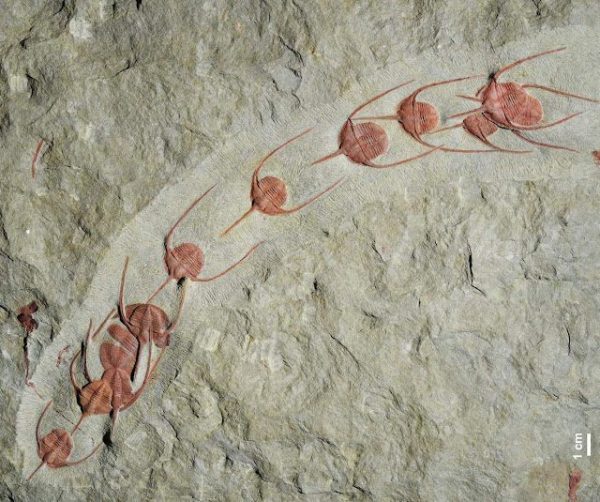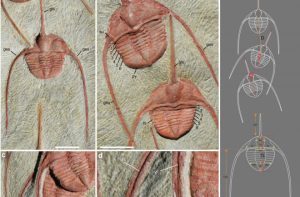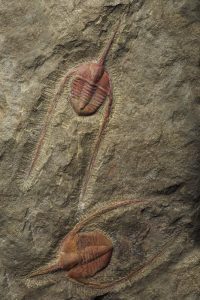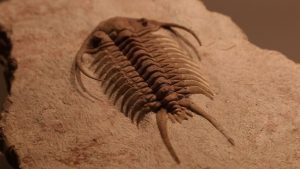In a groundbreaking revelation from the ancient epochs, the remains of Ampyx priscus, a trilobite arthropod dating back an astonishing 480 million years, have unfolded a captivating narrative of collective behavior etched in the sands of history.

Discovered in linear clusters in the lower Ordovician period of Morocco, these arthropods offer a mesmerizing snapshot into the early origins of group dynamics and cooperation in the animal kingdom.
The trilobites, ranging from 16 to 22 millimeters in size, exhibited a distinctive linear formation, suggesting a coordinated collective behavior. The arrangement of individuals in each cluster, with their bodies facing in the same direction, maintained contact through their spines.
This ordered pattern raises questions about the origins of collective behavior in arthropods and challenges preconceptions about the timeline of such behaviors in the evolutionary history.

The scale and consistency of the observed patterns dismiss the notion of passive transportation or accumulation by currents. Instead, researchers propose a more active scenario, indicating that these trilobites were caught in the act of migration, possibly during a sudden event like rapid sediment burial caused by storms.
This hypothesis adds a layer of complexity to the understanding of how ancient arthropods navigated their environments and responded to external stimuli.
Ampyx priscus, believed to have migrated in groups, utilized its unique spines for maintaining a single-row formation through physical contact while traversing the seafloor. The linear clusters may represent a stress response to environmental disturbances, such as storms, prompting the trilobites to migrate to quieter and deeper waters.

This intriguing parallel with modern-day spiny lobsters suggests that collective behaviors for environmental adaptation may have deep roots in evolutionary history.
Alternatively, the observed patterns could signify a seasonal reproductive behavior, with sexually mature trilobites migrating to spawning grounds. The blindness of Ampyx priscus adds an intriguing dimension to this hypothesis, as researchers speculate that these ancient creatures may have coordinated through sensory stimulation via spines and chemical communication.

The discovery not only sheds light on the behavioral intricacies of ancient arthropods but also underscores the neural complexity that allowed them to develop temporary collective behaviors.
In the grand tapestry of evolution, the linear clusters of Ampyx priscus serve as a remarkable chapter, offering a glimpse into the cooperative dynamics that existed in the ancient oceans more than 480 million years ago. This finding paves the way for a deeper understanding of the social complexities that have shaped life on Earth throughout geological time.